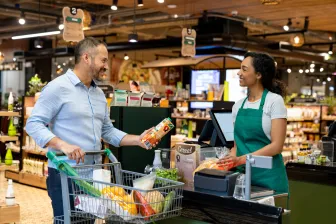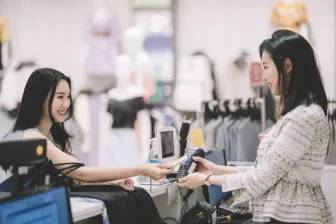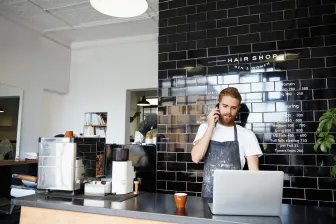Unattended Payment Solutions: Successfully Give Consumers Autonomy
Listen to this article

Self-checkout in Portugal just reached its 20th anniversary, and in the past two decades, consumers have become accustomed to paying for their purchases without help from a cashier. Unattended payment solutions spread beyond those first supermarkets and specialty retail stores to give consumers autonomy in other settings. Consumers now make payments independently at a variety of businesses, like quick service restaurants, where they order and pay at kiosks. They have a wider variety of choices at vending machines. They also self-pay at EV charging stations, where drivers can use bank cards or QR code payments, thanks to the new Legal Framework for Electric Mobility (RJME).
Understanding why consumers have adopted unattended payments is easy. When a merchant offers a self-checkout, vending, self-ticketing, or self-pay option, consumers don’t have to wait in a queue for assistance. Shopping trips are faster, payment is more convenient, and customer experiences are more pleasant.
The Benefits of Unattended Payment Solutions for Merchants
The upside of accepting payments with unattended devices isn’t limited to advantages for consumers. Merchants also benefit from unattended payment solutions. With self-checkout and self-payment, merchants can assign fewer employees to take payments and more staff to enhance operations or customer experiences in other parts of the business. Unattended payment solutions also work 24 hours per day, with no concerns if an employee calls off work. Furthermore, using self-checkout and unattended payment solutions makes scaling easier. As a business grows, it doesn’t necessarily have to hire additional cashiers, and if the business has seasonal ebbs and flows, managers don’t have to adjust the workforce with layoffs and rehiring.
How to Create Ideal Unattended Payment Experiences
Merchants moving to a self-checkout or self-pay model need a well-planned strategy to ensure the best customer experiences and the most success for their businesses. Successful businesses will keep these three principles in mind:
- People
Although unattended payment solutions don’t require staff to manage transactions, store employees are still an important part of the equation. A merchant should make sure that knowledgeable employees are nearby to help customers if they have questions, encounter issues with their payment, or need help when using the kiosk or terminal. Assigning employees with people skills to the checkout area will also help to maintain a personal connection with customers. In addition, the watchful eye of employees near a self-checkout will help to minimize losses from items that customers don’t scan, either intentionally or unintentionally, at the self-checkout.
- User-Friendly Technology
Merchants need to choose their self-checkout and self-service hardware and software carefully to provide the best user experiences. Software should be easy to use, making the steps of a transaction intuitive. Screens should be the right size for displaying information during customer interactions, scanners or other data entry tools should be easy to use and reliable. The system should be tamper-proof and secure to protect customer information, in addition to preventing losses for the business. Additionally, merchants should work with their solution provider to integrate their self-checkout or self-payment solution with their management system for visibility into their entire business in real time.
- Payments
The choice of payment methods is important to provide the best customer experiences and build loyalty. In addition to accepting traditional payment types, like debit and credit cards, contactless payments are increasing. Banco de Portugal reports that tap-to-pay payments volume increased by 24% last year, and more than half of all card purchases were contactless, primarily in retail and food businesses. Alternative payments, like MB WAY, Apple Pay, and Google Wallet, are also becoming more popular ways to pay. Merchants need to understand their customers, their preferences, and provide secure payments as a part of their self-service and self-checkout solutions.
Using an Android-based payment technology platform and Android terminals can provide the flexibility to adapt as consumers demand new payment options while complying with Payment Card Industry (PCI) standards.
Putting It All Together
Merchants need experienced partners to help them stay current with evolving technology, consumer, and industry trends and implement unattended payment solutions that meet all of their needs. With the right partner, merchants can execute a strategy that makes the most of staff skills to enhance experiences and minimize losses and that leverages software, hardware, and payment technology to optimize transactions.
Ingenico has successfully helped businesses implement unattended payment solutions to reach their business goals. Are you ready to learn how an Ingenico partnership will benefit your business? Contact us.









